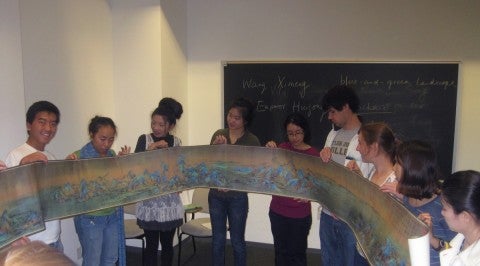"You Turn to the Camera and I Smile: The Apophatic Gaze in Trap Cam Footage"
We are in an age of species extinction. In this lecture Marran argues that trap camera technology used by biologists, conservationists, and professional and amateur photographers is the technology tout court of the Anthropocene. Through examples of animal images taken using camera traps, I show that trap camera images undermine the binary developed in film history in which nature is spontaneous and culture is staged. Two primary concepts drive this discussion: the “environmental incidental” and the "apophatic gaze." The “environmental incidental” in early film history must be reconsidered in this geophysical stage of the Anthropocene when millions of images are “incidental,” “partial,” “waste,” and also exceptional. Together they all create a picture of environment that is messier and more sophisticated than the relegation of environment to the spontaneous and incidental. Trap cameras constitute a form of technology used to create the conditions under which we might engineer ourselves out of environmental collapse and species extinction. Yet, there is more to this digital medium than its role as conservationist aid. In my reading of this digital technology, I show how trap cam footage invites a new concept of animal subjectivity.
====
Christine Marran specializes in the fields of environmental humanities, critical theory, and gender studies. She is Professor of Japanese Literature and Cultural Studies in the Department of Asian and Middle Eastern Studies and Co-Director of the Environmental Humanities Initiative at the University of Minnesota.
Through a new materialist approach, Marran’s work addresses how those in area studies can more deliberately contend with the more-than-human world in this age of rising seas. In her analysis of animal and plant life, archipelagoes and climate in narrative and moving images, Marran offers strategies for reading and interpreting more-than-human elements in the work of activist-writers and filmmakers in the Japanese archipelago. Selected works include "Ecology Without Culture: Aesthetics for a Toxic Age," “Planetarity,” "Temporality and Landscapes of Reclamation in Films about Environmental Toxins: Johnny Depp Goes to Minamata," "Arboreal Unicorns and Other Megaflora: On Kurosawa Kiyoshi's film Charisma," “Animal Stranger in a Tokyo Canal,” "First-Person Animal Voices in Tawada Yoko's Memoirs of a Polar Bear," "Poison Woman: Figuring Female Transgression in Japanese Modern Culture" and other works
===
[Image: Moo Deng; Instagram: khaokheow.zoo]

